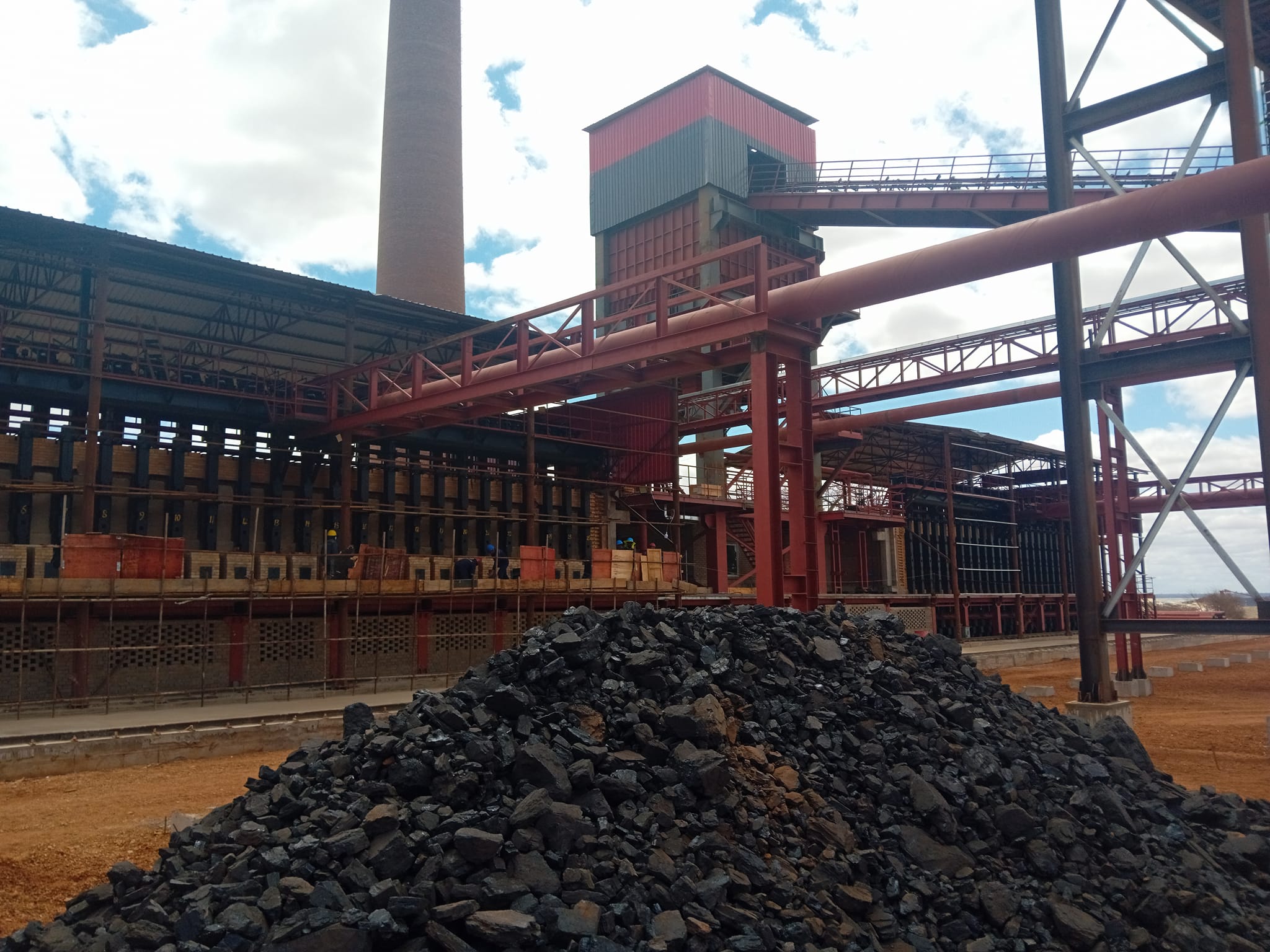The Minister of Mines and Mining Development, Hon. Winston Chitando, has praised Palm River for its pioneering role in generating its own electricity and utilizing gas emissions for power— a first in Zimbabwe, as reported by Mining Zimbabwe.
By Rudairo Mapuranga and Ryan Chigoche
This investment comes as local ferrochrome miners face a 2026 deadline to establish their own power generation facilities, addressing the sector’s growing energy needs. Continued economic growth is expected to push power demand above 3,000 megawatts within the next two years, with the mining sector projected to account for 80% of that increase.
During an appreciation tour of Palm River, Hon. Chitando, accompanied by the Minister of State for Matabeleland, commended the company for setting a benchmark in responsible high-carbon thermal power production.
“I want to commend Palm River for being a responsible high-carbon thermal power producer for two main reasons. Firstly, they have chosen to generate their own electricity rather than burdening the national grid, demonstrating leadership that other high-carbon producers should emulate. Secondly, they have introduced closed-loop technology, which is more efficient and environmentally friendly, including the use of gas emissions to generate electricity,” said Hon. Chitando.
This initiative underscores Zimbabwe’s goal of becoming a self-sufficient energy producer while enhancing its industrial capacity within a framework of responsible environmental practices. Miners have long identified power shortages as a major challenge, as ZESA has struggled to meet the mining sector’s demands.
The Zimbabwe Electricity Supply Authority (ZESA) currently has a generating capacity of only 2,000 megawatts (MW) but produces just 1,400 MW due to regular breakdowns at its thermal power stations and ongoing water shortages at its hydroelectric plants. As a result, miners across the country have begun investing in their own power solutions.
This project followed discussions between the company’s chairman and His Excellency, President Emmerson Mnangagwa, who directed that it be established as an integrated mining and energy park. Spanning 5,100 hectares within a special economic zone, this initiative promises to be transformative for Zimbabwe’s energy and mining sectors.
The project’s first phase is being developed through a joint venture involving the Government of Zimbabwe, Palm River, and Thuli Coal, focusing on three key components:
Thermal Power Production: Starting with 50 megawatts of electricity, with plans to add another 50 megawatts.
Coking Coal Production: Utilizing inputs from Thuli Coal and Hwange, the first phase will produce 100,000 tonnes of coke, scaling up to over 1 million tonnes.
High-Carbon Ferrochrome Production: Initially producing 100,000 tonnes, with potential for future expansion.
This US$3.6 billion project aims to establish stainless steel production in Zimbabwe, significantly reshaping the country’s industrial landscape.
Hon. Chitando expressed gratitude to President Mnangagwa for his vision and commitment to securing capital for the project. He noted that the President has actively monitored its progress, with the company’s chairman Mr Xong visiting Zimbabwe multiple times over the past year to provide updates.
“We look forward to further discussions with the Honourable Member of Parliament and Palm River management to determine the best time for His Excellency to officiate the groundbreaking ceremony of this transformative project,” Chitando concluded.
The Shanxi Palm River Energy Metallurgical project is strategically located 20 kilometers west of Beitbridge Town in Matabeleland South Province, just 17 kilometers from the South African border and 18 kilometers from the railway line.
The project will be constructed in three phases, including 1,200 MW of green power, comprehensive power generation, and supporting facilities; a coking plant with a capacity of 1 million tons per year; ferrochrome smelters producing 2 million tons annually; and stainless and carbon steel production of 1 million tons per year. Additionally, it will include community support facilities such as infrastructure, power and water supply, hospitals, schools, churches, and training centers.
Palm River’s parent company, Shanxi, is the world’s largest ferrochrome producer and the only Chinese enterprise with overseas chrome mines. Ferrochrome is a crucial raw material for stainless steel production and special steel applications.
Palm River, operating in Zimbabwe, ranks 25th among the top 100 enterprises in Inner Mongolia.
To promote industry and education, Shanxi Engineering Vocational College has partnered with Harare Polytechnic College for the College Enterprise College Project, aiming for mutual benefits in professional skills transfer, talent exchange, job creation, and local economic development.
.png)




